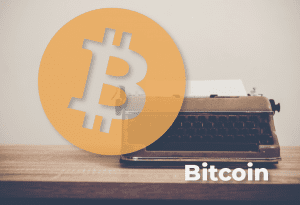
Table of Contents
ToggleThe world of cryptocurrencies exists thanks to various personalities who have contributed their knowledge and work to make it possible. Getting to know these people and their work can help us understand how the crypto ecosystem works and its origins. That is why today we will tell you about Martti Malmi and why he is so well known.
Martti Malmi is known for being a developer who supported the development of the Bitcoin project from the very beginning. His support was so notorious that he became the person in charge of turning the protocol into a cross-platform protocol. Thanks to his work, the protocol’s wider adoption and expansion was possible.
This developer is not as well known as others dedicated to the development of this cryptocurrency, however, he is no less important. Martti Malmi is mostly known by the name “sirius-m”, his nickname. He was one of the early stage developers of Bitcoin. In this post we will take a look at his entire career.
Life of Martti Malmi
Martti’s story begins in 1988. At the age of 12 he started his life as a programmer. His passion for the computer world led him to study software engineering at the University of Helsinki (Finland). Linus Torvalds, the creator of the Linux kernel, studied at the same university.
Martti is a very private person, so we do not know many details about his private life. On the other hand, his track record in terms of the Bitcoin project and the contributions he made to the community are in the public domain and widely appreciated.

Contributions to Bitcoin
Martti’s Bitcoin journey began in 2009, in April. Malmi came across a little-known project called Bitcoin on the Internet and decided he wanted to get involved. He contacted the creator of the project (Satoshi Nakamoto) and sent him a message that is well known: “I would like to help with Bitcoin if there is anything I can do.”
This message marked the beginning of Martti’s Bitcoin work and, with his support, Satoshi Nakamoto succeeded in releasing version 2.0 of the Bitcoin project. This version brought some of the most notable changes to the system, such as initial support for Linux. This support was necessary, since initially Bitcoin was developed for Windows (so we know that Satoshi Nakamoto created the project on this system) but later an update was necessary to adapt the project to another system.
Malmi’s participation in the project also meant the creation of the first Bitcoin community forum. This forum later became what we know today as BitcoinTalk, the best-known cryptocurrency forum. Malmi also collaborated in the administration of the Bitcointalk and Bitcoin.org domains.
Although Malmi had already been involved in many aspects of Bitcoin’s development up to this point, his track record continues. He helped improve early versions of the Bitcoin software and was one of the first publicly known Bitcoin miners. To get an idea, Malmi managed to mine with a single laptop between 2009 and 2011 a total of 50 thousand BTC.
Bitcoin to FIAT transactions
Martti is not only known for his help to Satoshi Nakamoto, he was also one of the few who managed to mark a milestone in the history of this project. Martti was involved in the creation of the first Bitcoin exchange. The platform was developed on October 11, 2009 and adopted the name NewLibertyStandard.
At the time of the launch of the exchange Malmi sent no less than 5,050 bitcoins which were exchanged for the small amount of $5.05. These dollars were sent to him by PayPal. This particular exchange was listed as the first exchange between cryptocurrencies and fiat money in history. It was also the beginning of the exchange platforms we use today.
Despite all of Martti’s achievements, he continued to use his knowledge of Bitcoin to start developing what was the first generation of Bitcoin exchanges. Of course, Martti already had some Web programming skills. The first of the exchanges was bitcoinexchange.com. This exchange was made public in 2010, in March, and as expected, its presentation took place on the BitcoinTalk forum.
Two years later, Martti developed eurobtc.com. This exchange was launched in April 2012. It was another Bitcoin exchange that allowed the buying and selling of BTC using SEPA transactions.
As we can see, Martti stood out for being a pioneer in the development of exchange houses and businesses capable of accepting Bitcoin as a payment method. His trajectory continues and today he is the owner of the company SC5. This was one of the pioneering companies in the acceptance of Bitcoin as a payment method and the salary of its workers is paid in this currency.
The end of Martti in Bitcoin
Despite his outstanding contributions to this project, Martti Malmi began to slowly drift away from the community. His departure became more noticeable after the disappearance of Satoshi Nakamoto from the project and the arrival of Gavin Andresen. Before leaving, Malmi made a statement explaining his departure:
“I found the atmosphere less inspiring and exciting than in the early days, when none of Bitcoin’s potential had yet been realized. On the other hand, by then Bitcoin already had many skilled coders who would keep it going.”
Martti’s last move on the BitcoinTalk forum took place in 2012 just before he disappeared from the cryptocurrency world for a while. It should be noted that his departure from the project did not mean that he ceased his activity as a developer. Malmi continued to support the decentralization of cryptocurrencies from the outside.
He continued with other projects and in 2013 he made public the Identifi project. This particular project is a fully decentralized digital identity and reputation system. Currently this project has a new development to which it is integrated, Iris. Iris is a decentralized communication system. It has a point-to-point encryption and cross-platform capability.
EAmong the projects Martti subsequently participated in are MONI, Gun, among others. As mentioned above, Martti is currently leading SC5 and continues to collaborate with the startup Gun.








I did not know of Martii Malmi as he does not get recognition along with Satoshi Nakamoto. Thank you for this article!